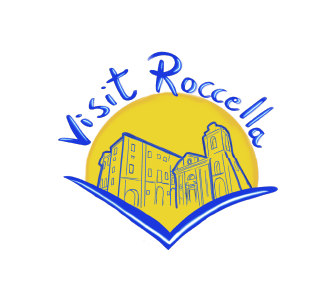translated with AI
One of the ancient families of Roccella, numerically more substantial, is that of the Minici. It crossed the 17th and 18th centuries excelling in the professional and administrative fields of Roccella. The progenitor of all the Minici who arrived to our days was Mr. Giuseppe, a Physician, who had married Rosa Cosenza from Stignano (who died in 1765) as his first wife and later Mrs. Agata Talotta. Eleven children were born from the two marriages. Of the women, who all survived, they married prominent figures from the various towns surrounding Roccella. It must be mentioned that Mrs. Maria Anna Minici was the first teacher of the public school of Roccella, which was compulsorily established in 1808, after the takeover of the Kingdom of Naples by the Bonapartes. Mrs. Maria Anna, on August 28, 1809, married Giuseppe Totino, moving elsewhere, thus ending her teaching service after only one year.
Of the males who continued to live, there was a Physician, a “Aromatario” ‘Pharmacist’, a landowner, and a lawyer. Each of these gave rise to a new and substantial branch of this family.
It is worth mentioning that the physician Mr. Giuseppe Minici unwittingly became the protagonist of an incident, which is worth telling, also because it involved Bishop Monsignor Scoppa. Immediately after the earthquake of 1783, the “Cassa Sacra” was established by the government of Naples, which had power in the post-earthquake reconstruction effort. For financing, all the assets owned by various ecclesiastical entities were requisitioned, including the Convents. Indeed, a property of the Paolotti convents was the subject of dispute between Mr. Giuseppe Minici and the Bishop. Attached to the Convent, facing the current Piazza S. Vittorio, was the olive press owned by the Franciscan monks, which the authorities of the Cassa Sacra confiscated and put up for sale. According to the system of the time, the purchase of this olive press was put up for auction to the highest bidder. The auction was to be held in three sessions, according to the laws of the time. Well, in the first two meetings, only Dr. Minici presented his offer, without any competitors. The third auction session was held in S. Agata del Bianco. We do not know if Minici did not propose himself at the auction convinced that no one else would appear at that distant venue since there were no participants in the first ones. The fact is that at that session in S. Agata, a messenger of the Bishop presented an offer slightly higher than that offered by Minici the two previous evenings. The olive press remained assigned to the Bishop. A story that smells of deceit. On the remains of that olive press shattered by the earthquake and on its land next to it, the Palazzo Scoppa was built, now Bova-Zito. If the third session of that auction had taken place in Roccella, we would now be telling another story.
To complete and honor the figure of Mr. Giuseppe Minici, for several years he was the accountant and Treasurer of Prince Carafa, a truly prestigious position.
The son of Mr. Giuseppe, the “Aromatario” Mr. Annibale Minici, was the protagonist of another curious event, in the same circumstances after the earthquake of 1783. The action of the Cassa Sacra also affected the other Convent of the Reformers who suffered the seizure of their assets, as well as being driven away from Roccella. Well, “The Medicine Dispenser” Annibale Minici complained to the authorities because he “provided the University of Roccella every year with all the medicines prescribed by the doctors for the ailments suffered, and then in the month of August he was paid by the aforementioned University. After the Universal misfortune of the Earthquake, all the fees were inhibited by the Vicar General of the two Provinces and the petitioner remained a creditor in the amount of twelve ducats and thirty-six grains for so many medicines administered to said Reverend Fathers as per the prescriptions he keeps signed by the Guardian Father …”. Basically, the account of the medicines clashed between the cashiers of the Cassa Sacra and the cashier of the University. A long controversy that ended up in court. The documentation of this event is found in the State Archive of Catanzaro, which also preserves the doctors’ prescriptions with the medicines marked for the sick Reformers: a curiosity for any reader, the prescriptions are a bunch of sheets full of indecipherable hieroglyphs.
Mr. Annibale Minici married Mrs. Diana Berardi from Cutro, from whom two children were born. After Mrs. Diana died in 1804, Mr. Annibale married Mrs. Agata Jelasi, from whom twelve children were born, for a total of 14 heirs who avoided the danger of extinction of the Minici family. All the male children of the Medicine Dispenser were prestigious men of law and over time Mayors of Roccella. Mr. Annibale, in addition to his activity as a Dispenser, had various administrative duties, mostly Municipal Cashier.
This pharmacy activity continued with the sons Saverio and Ilario Antonio, although the latter for a short time, due to premature death: he was 24 years old when he died on April 18, 1845; a few months later, on September 17, his father Mr. Annibale also passed away.
The heirs of this family of pharmacists have preserved some containers, classic hand-painted ceramic jars. In these containers, a coat of arms is reproduced, oval in shape, topped by a crown ornament, inside the shield is depicted a personalized golden lion. The same lion, albeit turned, is carved in the keystone of the entrance door of one of the many Minici palaces.
